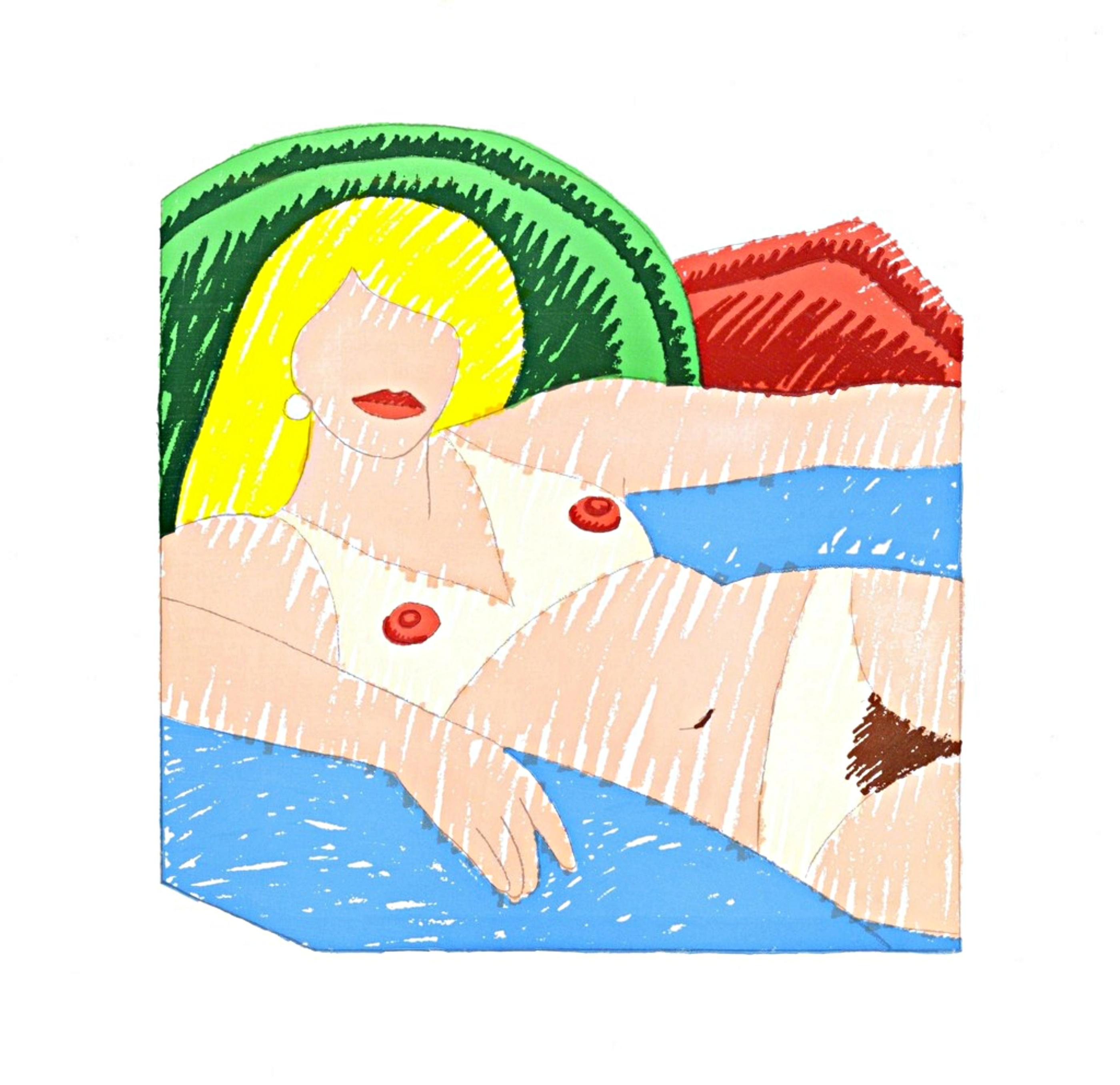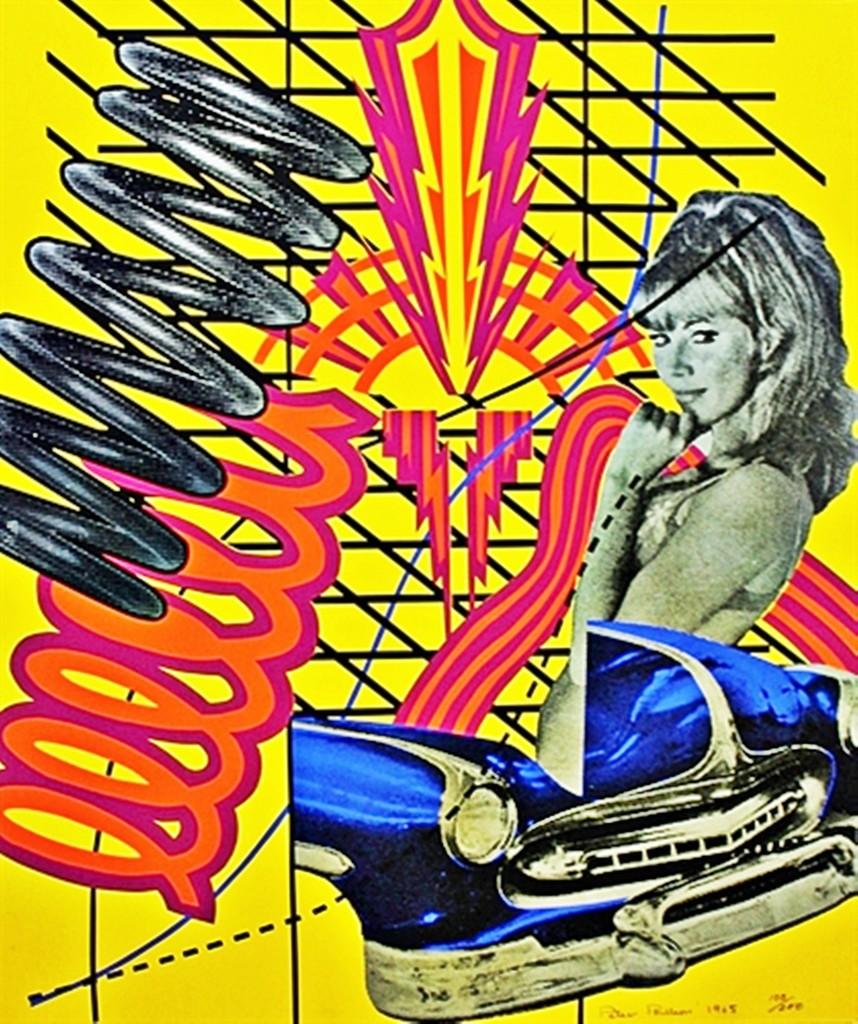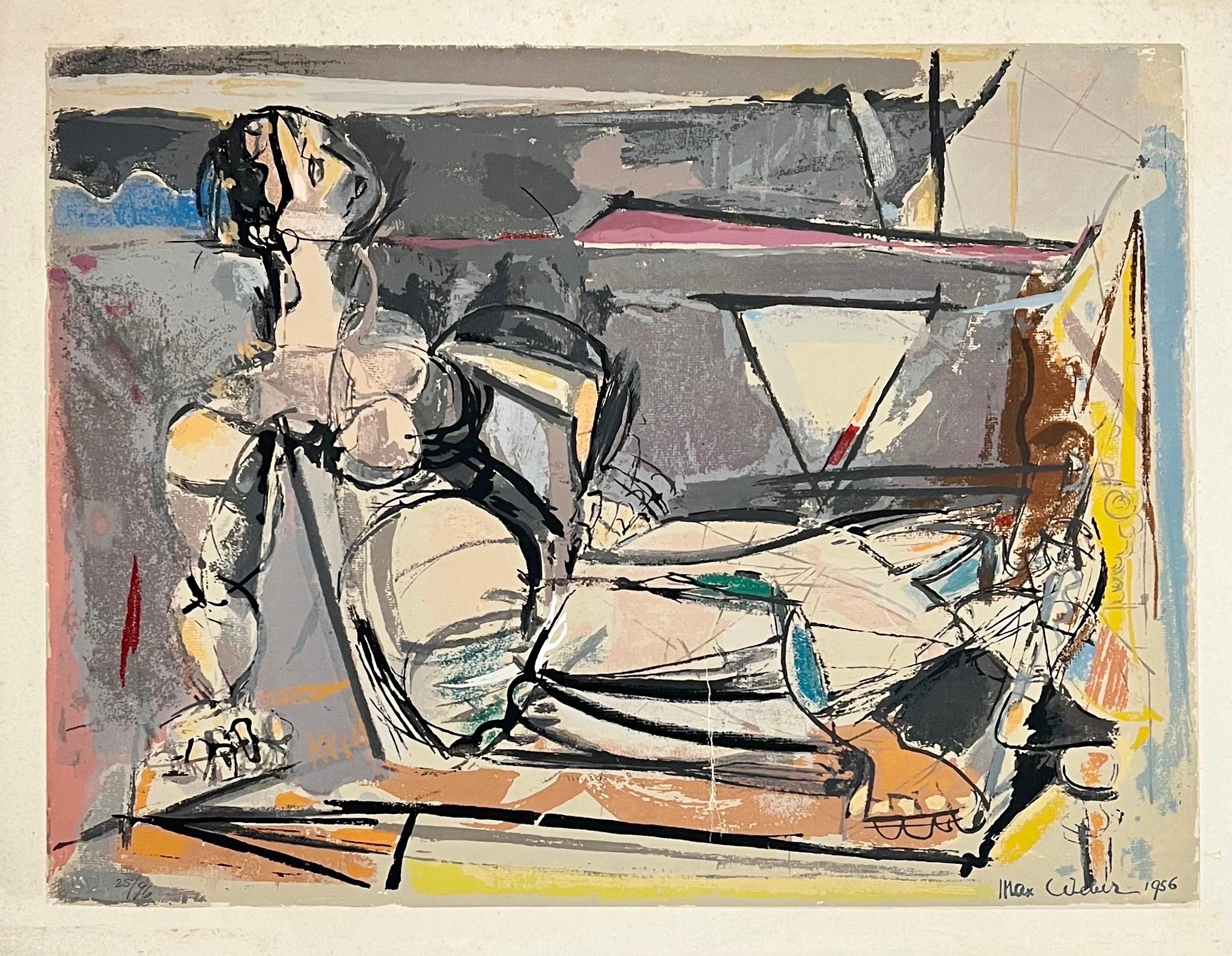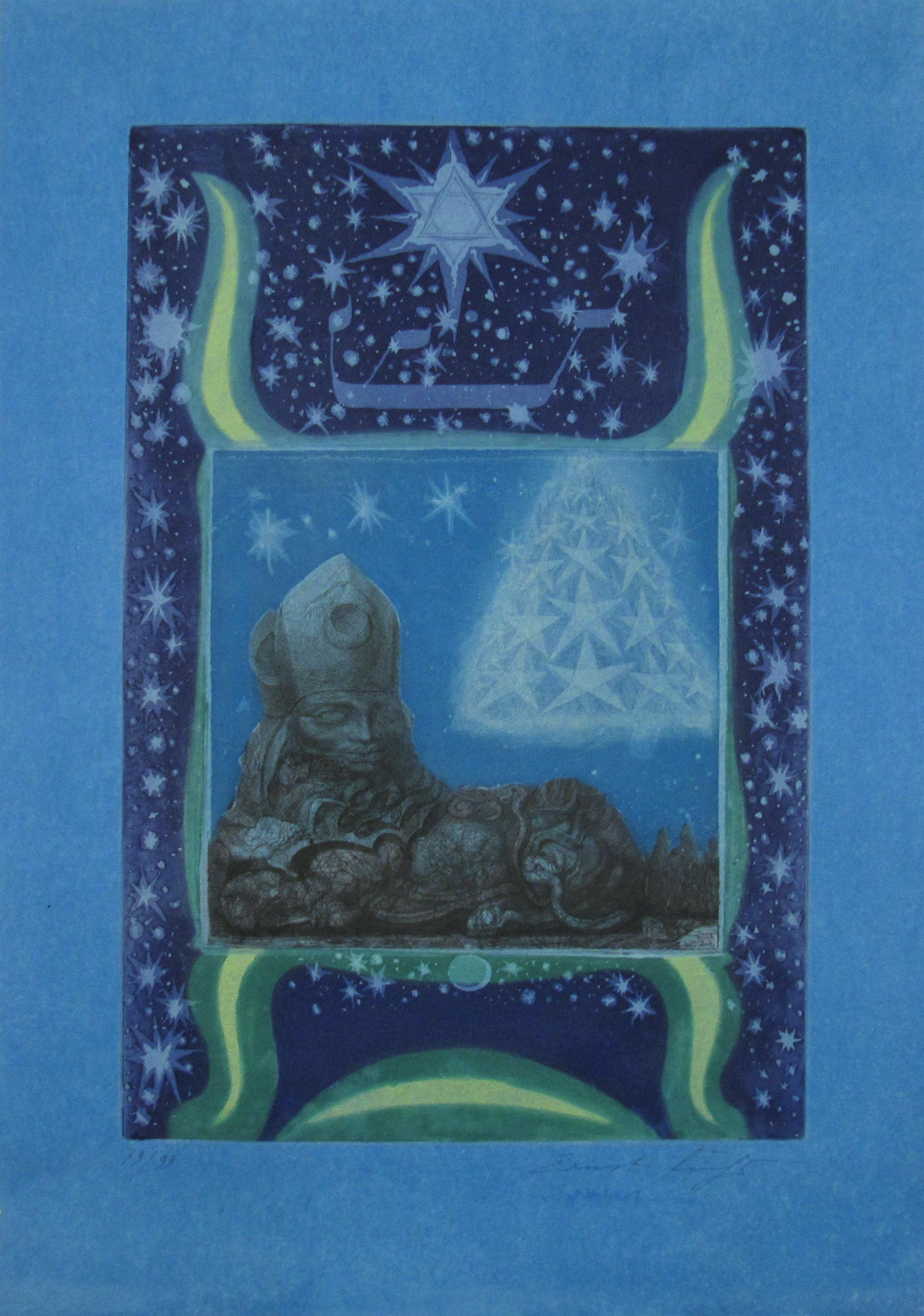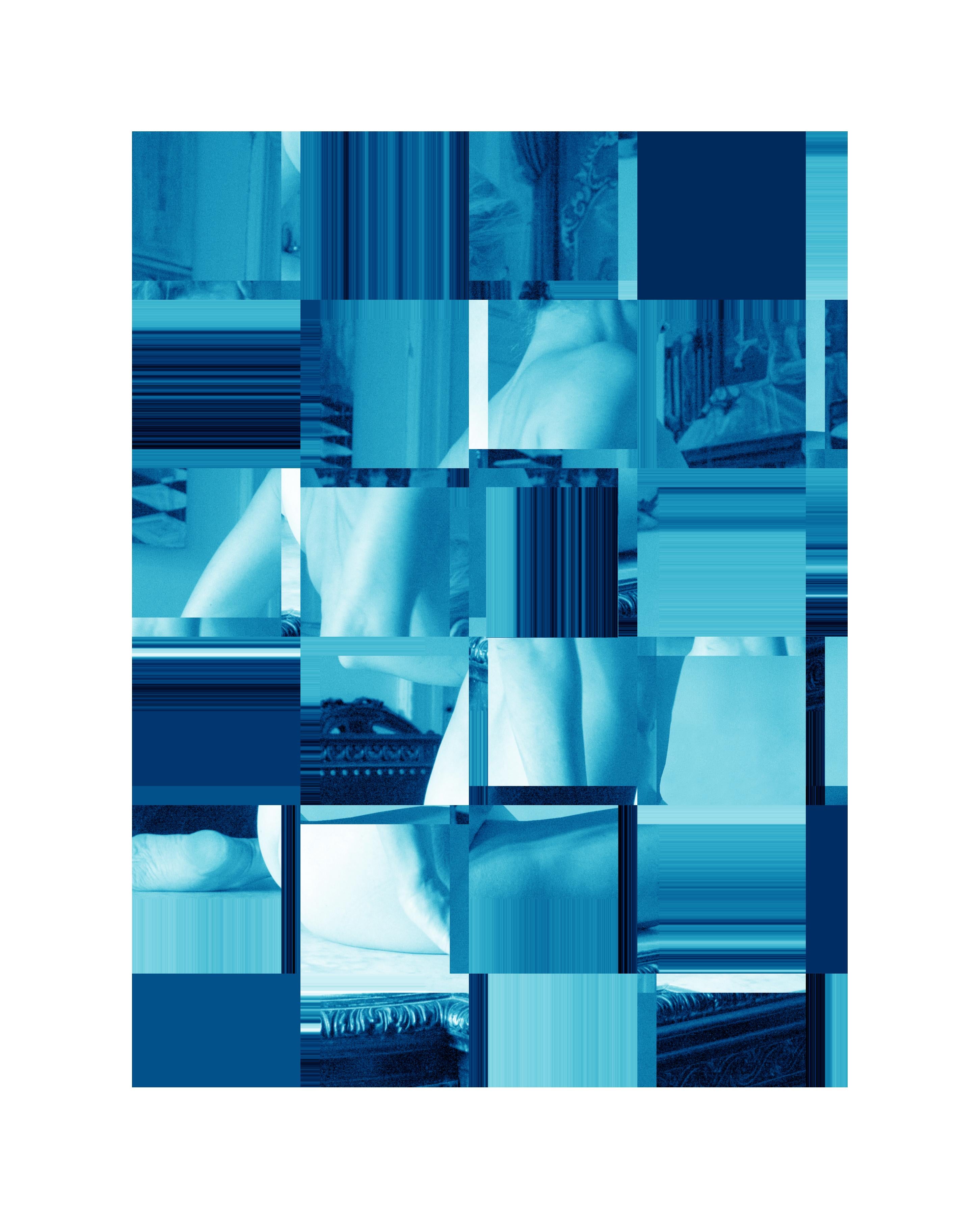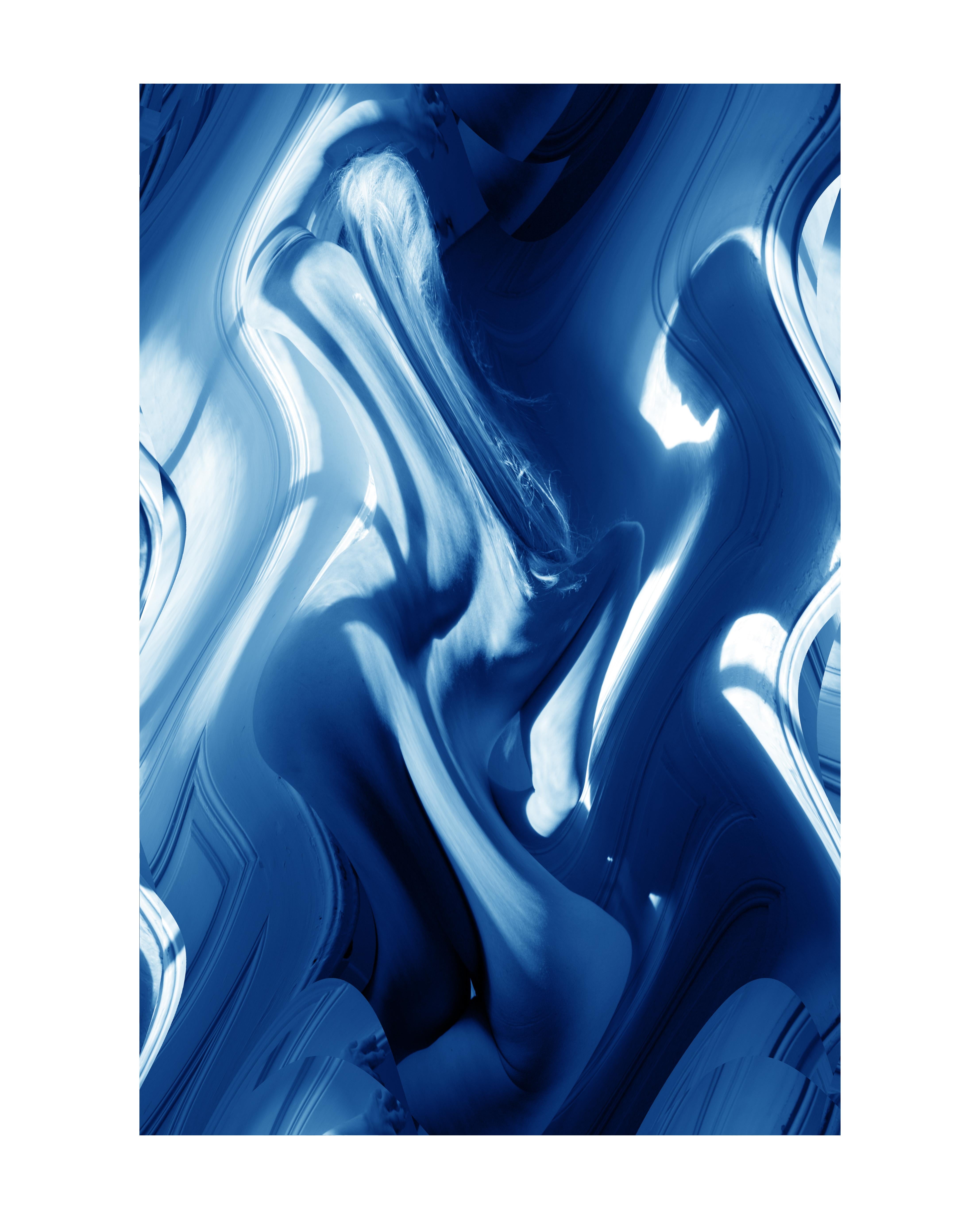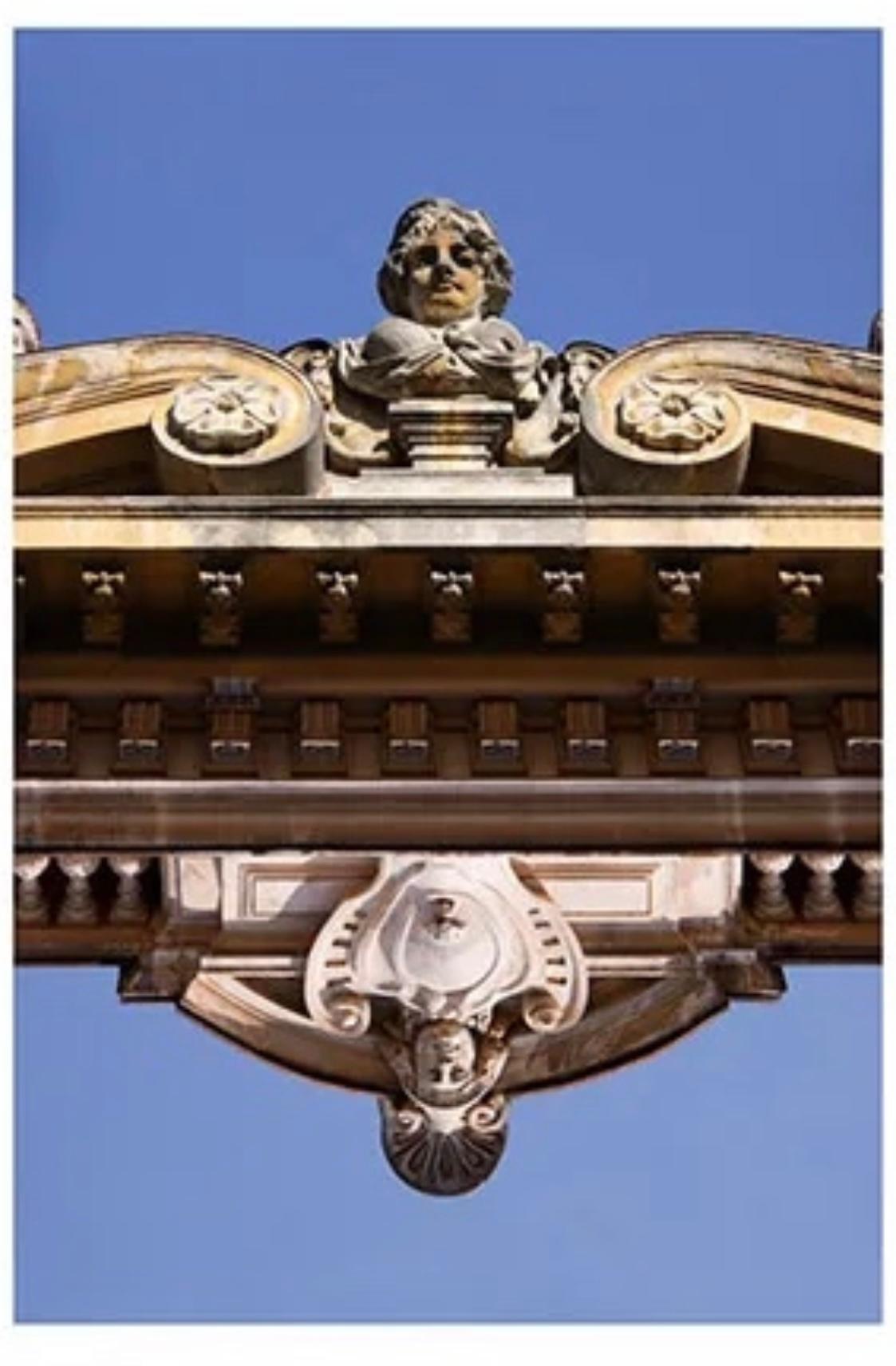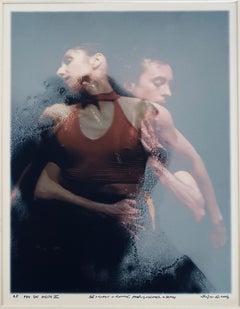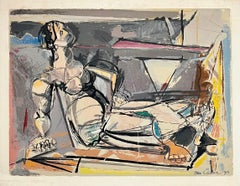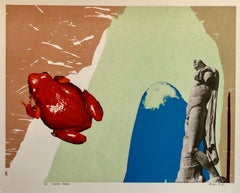
Silkscreen Surrealist Pop Art Print "Classy Rebel" Nude Statue and Frog
View Similar Items
Want more images or videos?
Request additional images or videos from the seller
1 of 9
Michael KniginSilkscreen Surrealist Pop Art Print "Classy Rebel" Nude Statue and Frog1981
1981
About the Item
- Creator:Michael Knigin (1942 - 2011, American)
- Creation Year:1981
- Dimensions:Height: 22.5 in (57.15 cm)Width: 28.25 in (71.76 cm)
- Medium:
- Movement & Style:
- Period:
- Condition:
- Gallery Location:Surfside, FL
- Reference Number:1stDibs: LU3823238961
About the Seller
4.9
Platinum Seller
These expertly vetted sellers are 1stDibs' most experienced sellers and are rated highest by our customers.
Established in 1995
1stDibs seller since 2014
1,550 sales on 1stDibs
Typical response time: 1 hour
More From This SellerView All
- Silkscreen Surrealist Pop Art Print "Pas De Deux"By Michael KniginLocated in Surfside, FLPrint without matte is 19" X 13". Michael Knigin was born in 1942 in Brooklyn, NY. He attended and graduated from Tyler School of Art, Temple University. He received a Ford Founda...Category
21st Century and Contemporary 85 New Wave Abstract Prints
MaterialsScreen
- American Modernist Cubist Lithograph Screenprint "Reclining Woman" Max WeberBy Max WeberLocated in Surfside, FLReclining Cubist Nude Woman Max Weber (April 18, 1881 – October 4, 1961) was a Jewish-American painter and one of the first American Cubist painters who, in later life, turned to more figurative Jewish themes in his art. He is best known today for Chinese Restaurant (1915), in the collection of the Whitney Museum of American Art, "the finest canvas of his Cubist phase," in the words of art historian Avis Berman. Born in the Polish city of Białystok, then part of the Russian Empire, Weber emigrated to the United States and settled in Brooklyn with his Orthodox Jewish parents at the age of ten. He studied art at the Pratt Institute in Brooklyn under Arthur Wesley Dow. Dow was a fortunate early influence on Weber as he was an "enlightened and vital teacher" in a time of conservative art instruction, a man who was interested in new approaches to creating art. Dow had met Paul Gauguin in Pont-Aven, was a devoted student of Japanese art, and defended the advanced modernist painting and sculpture he saw at the Armory Show in New York in 1913. In 1905, after teaching in Virginia and Minnesota, Weber had saved enough money to travel to Europe, where he studied at the Académie Julian in Paris and acquainted himself with the work of such modernists as Henri Rousseau (who became a good friend), Henri Matisse, Pablo Picasso, and other members of the School of Paris. His friends among fellow Americans included some equally adventurous young painters, such as Abraham Walkowitz, H. Lyman Sayen, and Patrick Henry Bruce. Avant-garde France in the years immediately before World War I was fertile and welcoming territory for Weber, then in his early twenties. He arrived in Paris in time to see a major Cézanne exhibition, meet the poet Guillaume Apollinaire, frequent Gertrude Stein's salon, and enroll in classes in Matisse's private "Academie." Rousseau gave him some of his works; others, Weber purchased. He was responsible for Rousseau's first exhibition in the United States. In 1909 he returned to New York and helped to introduce Cubism to America. He is now considered one of the most significant early American Cubists, but the reception his work received in New York at the time was profoundly discouraging. Critical response to his paintings in a 1911 show at the 291 gallery, run by Alfred Stieglitz, was an occasion for "one of the most merciless critical whippings that any artist has received in America." The reviews were "of an almost hysterical violence." He was attacked for his "brutal, vulgar, and unnecessary art license." Even a critic who usually tried to be sympathetic to new art, James Gibbons Huneker, protested that the artist's clever technique had left viewers with no real picture and made use of the adage, "The operation was successful, but the patient died."[8] As art historian Sam Hunter wrote, "Weber's wistful, tentative Cubism provided the philistine press with their first solid target prior to the Armory Show." The Cellist...Category
Mid-20th Century Cubist Abstract Prints
MaterialsScreen
- New Years 1988, Keith Haring Pop Art Nude Color Silkscreen Print InvitationBy Keith HaringLocated in Surfside, FLArtist: Keith Haring, American (1958 - 1990) Title: New Year's Invitation 1988 Year: 1988 Medium: Silkscreen on Paper Image Size: 11 x 8 inches This bears a printed signature. It is not hand signed as issued. Keith Allen Haring (May 4, 1958 – February 16, 1990) was an American artist and social activist whose work responded to the New York City street culture of the 1980s by expressing concepts of birth, death, sexuality, and war. Haring's work was often heavily political and his imagery has become a widely recognized visual language of the 20th century. Keith Haring was born in Reading, Pennsylvania, on May 4, 1958. He was raised in Kutztown, Pennsylvania, by his mother Joan Haring, and father Allen Haring, an engineer and amateur cartoonist. He had three younger sisters, Kay, Karen and Kristen. Haring became interested in art at a very early age spending time with his father producing creative drawings. His early influences included Walt Disney cartoons, Dr. Seuss, Charles Schulz, and the Looney Tunes characters in The Bugs Bunny Show. In Haring's teenage years, he left his religious background behind and hitchhiked across the country, selling vintage t-shirts and experimenting with drugs. He studied commercial art from 1976 to 1978 at Pittsburgh's Ivy School of Professional Art but lost interest in it. He made the decision to leave after having read Robert Henri's The Art Spirit (1923) which inspired him to concentrate on his own art. Haring had a maintenance job at the Pittsburgh Center for the Arts and was able to explore the art of Jean Dubuffet, Jackson Pollock, and Mark Tobey. His most critical influences at this time were a 1977 retrospective of the work of Pierre Alechinsky and a lecture by the sculptor Christo in 1978. Alechinsky's work, connected to the international Expressionist group CoBrA, gave Haring confidence to create larger paintings of calligraphic images. Christo introduced him to the possibilities of involving the public with his art. Haring's first important one-man exhibition was in Pittsburgh at the Center for the Arts in 1978. He moved to New York to study painting at the School of Visual Arts. He studied semiotics with Bill Beckley as well as exploring the possibilities of video and performance art. Profoundly influenced at this time by the writings of William Burroughs, he was inspired to experiment with the cross-referencing and interconnection of images. He first received public attention with his public art in subways. Starting in 1980, he organized exhibitions at Club 57, which were filmed by the photographer Tseng Kwong Chi. Around this time, "The Radiant Baby" became his symbol. His bold lines, vivid colors, and active figures carry strong messages of life and unity. He participated in the Times Square Exhibition and drew animals and human faces for the first time. That same year, he photocopied and pasted provocative collages made from cut-up and recombined New York Post headlines around the city. In 1981, he sketched his first chalk drawings on black paper and painted plastic, metal, and found objects. By 1982, Haring had established friendships with fellow emerging artists Futura 2000, Kenny Scharf, Madonna and Jean-Michel Basquiat. He created more than 50 public works between 1982 and 1989 in dozens of cities around the world. His "Crack is Wack" mural, created in 1986, is visible from New York's FDR Drive. He got to know Andy Warhol, who was the theme of several of Haring's pieces, including "Andy Mouse". His friendship with Warhol would prove to be a decisive element in his eventual success. In December 2007, an area of the American Textile Building in the TriBeCa neighborhood of New York City was discovered to contain a painting of Haring's from 1979. In 1984, Haring visited Australia and painted wall murals in Melbourne (such as the 1984 'Detail-Mural at Collingwood College, Victoria') and Sydney and received a commission from the National Gallery of Victoria and the Australian Centre for Contemporary Art to create a mural which temporarily replaced the water curtain at the National Gallery. He also visited and painted in Rio de Janeiro, the Musée d'Art Moderne de la Ville de Paris, Minneapolis and Manhattan.[9] He became politically active, designing a Free South Africa poster...Category
20th Century Contemporary Nude Prints
MaterialsMixed Media, Screen
- Lithuanian French Cubist Modernist Lithograph "Flight" RefugeesBy Jacques LipchitzLocated in Surfside, FLActual sheet is 25 X 20 size includes frame. Hand signed and numbered. The Flight exhibition comes from a portfolio of prints organized by Varian Fry in 1964 and completed in 1971. B...Category
1960s Modern Figurative Prints
MaterialsLithograph
- Erotic Female Nude - Etching from Le SatyriconBy André DerainLocated in Surfside, FLThis offering is for one etching. --- Derain was born in 1880 in Chatou, Yvelines, Île-de-France, just outside Paris. In 1895 Derain began to study on his own, contrary to claims th...Category
20th Century Nude Prints
MaterialsEtching
- Erotic Female Nude - Etching from Le SatyriconBy André DerainLocated in Surfside, FLThis lot is for one etching. --- Derain was born in 1880 in Chatou, Yvelines, Île-de-France, just outside Paris. In 1895 Derain began to study on his own, contrary to claims that meeting Vlaminck or Matisse began his efforts to paint, and occasionally went to the countryside with an old friend of Cézanne's, Father Jacomin along with his two sons. In 1898, while studying to be an engineer at the Académie Camillo, he attended painting classes under Eugène Carrière, and there met Matisse. In 1900, he met and shared a studio with Maurice de Vlaminck and together they began to paint scenes in the neighbourhood, but this was interrupted by military service at Commercy from September 1901 to 1904. Following his release from service, Matisse persuaded Derain's parents to allow him to abandon his engineering career and devote himself solely to painting; subsequently Derain attended the Académie Julian. At about this time Derain's work began overtly reflecting his study of the Old Masters. The role of color was reduced and forms became austere; the years 1911–1914 are sometimes referred to as his gothic period. In 1914 he was mobilized for military service in World War I and until his release in 1919 he would have little time for painting, although in 1916 he provided a set of illustrations for André Breton's first book, Mont de Piete. After the war, Derain won new acclaim as a leader of the renewed classicism then ascendant. With the wildness of his Fauve years far behind, he was admired as an upholder of tradition. In 1919 he designed the ballet La Boutique fantasque for Diaghilev, leader of the Ballets Russes. A major success, it would lead to his creating many ballet designs. The 1920s marked the height of his success, as he was awarded the Carnegie Prize in 1928 for his "Still-life with Dead Game" and began to exhibit extensively abroad—in London, Berlin, Frankfurt, Düsseldorf, New York City and Cincinnati, Ohio. During the German occupation of France in World War II, Derain lived primarily in Paris and was much courted by the Germans because he represented the prestige of French culture. Derain accepted an invitation to make an official visit to Germany in 1941, and traveled with other French artists to Berlin to attend a Nazi exhibition of an officially endorsed artist, Arno Breker...Category
20th Century Nude Prints
MaterialsEtching
You May Also Like
- Shiny Nude (Stealingworth, 33)By Tom WesselmannLocated in New York, NYTom Wesselmann Shiny Nude (Stealingworth, 33), 1977 Silkscreen on glossy cast-coated Kromekote paper 8 × 8 inches Edition 489/1000 Pencil numbered 489/1000 with artists printed name on the verso; Held in original stamped envelope Distributed by the Museum of Modern Art; printed by Unity Engraving Co. Unframed "Shiny Nude" - a dazzling limited edition, pencil numbered print features all of the hallmarks of the risque art arising from the sexual revolution of the 1960s and 1970s- saturated lips, full pubic hair...Category
1970s Pop Art Nude Prints
MaterialsScreen
- Custom Print I (from 11 Pop Artist, Volume I) I Dream of Jeannie & Blue CarBy Peter PhillipsLocated in New York, NYPeter Phillips Custom Print I (from 11 Pop Artist, Volume I), 1965 Silkscreen on foil coated paper 24 × 20 inches Pencil signed, dated and numbered 100/200. Unframed This dazzling, ...Category
1960s Pop Art Nude Prints
MaterialsScreen
- Keith Haring Theater der Welt Frankfurt (Keith Haring 1985)By Keith HaringLocated in NEW YORK, NYKeith Haring, Theater der Welt Lithograph, Frankfurt, Germany 1985: Original 1st printing produced during Haring's lifetime. Bold, stand-out colors that make for brilliant, largely s...Category
1980s Pop Art Nude Prints
MaterialsScreen
- KabbalahBy Richard MeierLocated in New York, NYRichard Meier Kabbalah, 2011 Silkscreen collage with hand-coloring and photography sheet size: 30" x 30" signed numbered dated in pencil by the artist edition of 50 Richard M...Category
Contemporary Abstract Prints
MaterialsMixed Media, Screen
- Ernst Fuchs Sphinx Mystagoga Surreal Color Etching Vienna Fantastic Realism 1967By Ernst FuchsLocated in Meinisberg, CHErnst Fuchs (Austrian, 1930 - 2015) The Sphinx Mystagogo Sheet Nr. 6 from the Folio “Die Sieben Bilder und Sprüche der Sphinx”, published in Autumn of 1967 by Galerie Sydow in Frankfurt, Germany. • Aquatint Etching • Ed. 79/99 • Sheet ca. 59 x 41.5 cm • Plate signed • Signed & numbered by the artist in pencil Worldwide shipping is complimentary - There are no additional charges for handling & delivery. Ernst Fuchs was an Austrian painter, draftsman, printmaker, sculptor, architect, stage designer, composer, poet, and one of the founders of the Vienna School of Fantastic Realism. I discovered him through H.R. Giger ‘s work, who himself was greatly inspired by the creations of Fuchs and on several occasions exhibited his friend ‘s art in his museum, the Château St-Germain, Gruyères, Switzerland. I actually own the original folio box...Category
1960s Surrealist Abstract Prints
MaterialsPaper, Ink, Aquatint, Etching
- Centaurs signed #2/20 Paula Craioveanu Photograph 20x16in in mat 28x20inBy Paula CraioveanuLocated in Forest Hills, NYUNDER THE SKIN 5 Surreal Nude, part of my "Under the Skin" series. Printed on Hahnemuhle art photo paper with white borders, size is 20x16in. In mat overall size 28x20in. This par...Category
2010s Surrealist Nude Prints
MaterialsPhotographic Paper
Recently Viewed
View AllMore Ways To Browse
New York Vintage Shops
Wave Open
Vintage Classy
Contemporary Art Statue
Tokyo Pop
Modern Art Statues
Full Statue
Roy Lichtenstein Modern Art
State Statue
Temple University Vintage
Retro Pop Art Shopping
Temple Statues
Modern Print By Roy Lichtenstein
Screen Print By Roy Lichtenstein
Jerusalem 1967
Nasa Print
Pop Statue
Pop Art Statues

